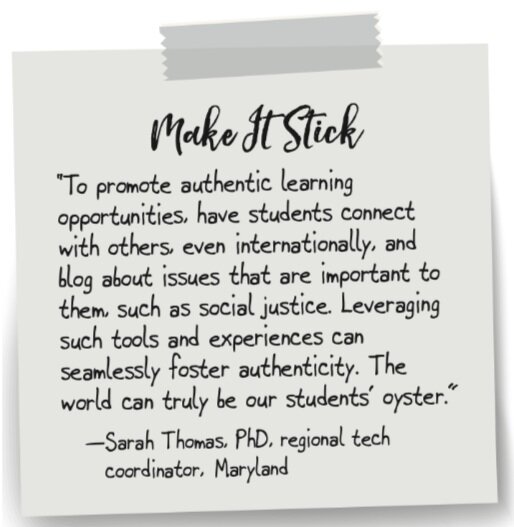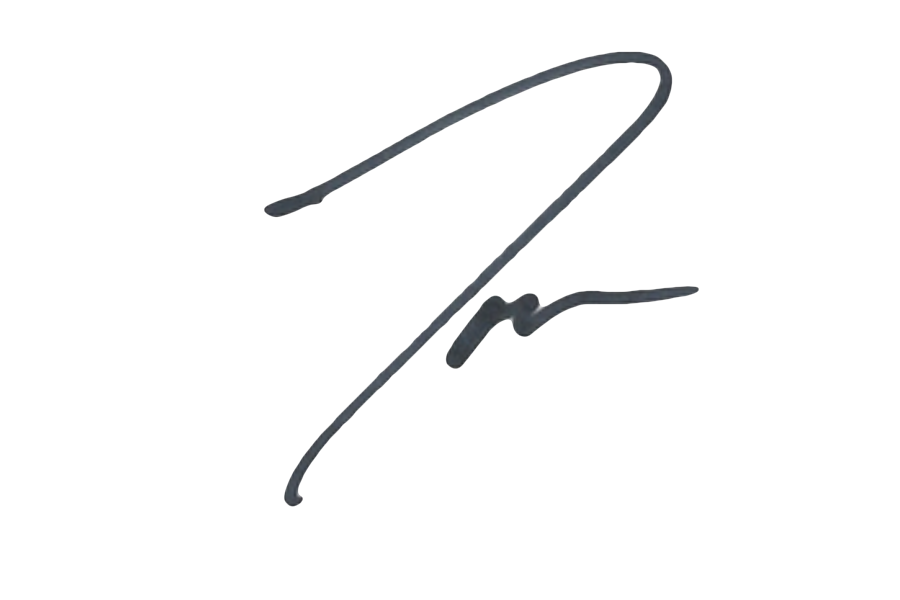Below is a post about a brand new IMpress book, Personal & Authentic by Thomas C. Murray. Below Tom gives an overview of the book and links to the amazing resources for educators.
I’ll admit it. I’m incredibly excited for today. For the past year, I’ve poured my heart and soul into this book. So, may I present to you: Personal & Authentic: Designing Learning Experiences that Impact a Lifetime. It’s an honor to team up with George Couros and IMPress for the book’s release!
Here are a few snapshots of what you’ll find inside:

1. Foreword by Inky Johnson – Highlighted for his courage by ESPN’s 30 for 30 Films, Inky Johnson’s story is one of perseverance through severe adversity. Growing up in one of the most dangerous neighborhoods in the United States and sleeping on the floor most nights, Inky credits a teacher with saving his life and recognizes his teacher’s impact on his life decades later. Today, I’m proud to call Inky a friend. Here’s some of what you’ll read in his foreword:
“I’m a firm believer that things don’t happen to you. They happen for you. The funny thing about my injury was that my life found new meaning and new purpose. Instead of the injury serving as a curse, it has served as a blessing. It’s an opportunity. You see, my arm may be paralyzed, but my heart isn’t. My mind isn’t. My attitude isn’t. The same arm the doctor told me I would never use again because of paralysis, I now use every day of my life. I believe you are not defined by your circumstances or your situation. You are defined by your decisions and your choices. Every day I make a decision to make my life count. Every day I’m going to work to inspire someone. Every day I’m going to work to encourage someone. As an educator, you get to do the same.” – Inky Johnson
2. The Personal & Authentic Framework – Designed with implementation in mind, the Personal & Authentic Framework solidifies the “what” and the “how” in creating the types of learning experiences that impact a lifetime. With the learner at the center, and held together by relationships and a culture for learning, the various ways in which teachers can make learning personal and authentic can be amplified. These include: Social-Emotional Learning; Culturally Responsive; Moments of Awe; Relevant & Contextualized; Interests, Passions, & Strengths; Creation & Design; Flexible Pace & Path; and Authentic Feedback. Supports for the learning experience include the spaces where kids learn and the tools they use, which either amplify or hinder the learner throughout the process.

3. Co-Authored Sections On Some of Today’s Most Important Issues – I asked two of my good friends, Ken Shelton and Dr. Rosa Perez-Isiah, both of whom have different lenses and life experiences than I do, to co-author sections on overcoming equity barriers and how culturally responsive teaching is the only option. Ken and Rosa are incredibly respected in the space, and it was vital that I amplify voices other than my own, especially in these sections.


4. “Stop & Reflect” Questions – Throughout each chapter, a variety of “Stop & Reflect” questions encourage users to do just that…pause for a few moments and self-reflect on their mindset and practices. These questions form the heart of the downloadable free study guide that is available for the book.

5. “Make it Stick” & “Try This…” – In understanding the importance of being practical, while simultaneously amplifying great ideas from a diverse group of educators, Personal & Authentic includes the thoughts and innovative ideas of over 50 educators who will encourage you to step out of your comfort zone. Each “Make it Stick” is designed to make what you read actionable. At the end of most sections, each “Try this…” gives you additional ways to implement what’s been read into everyday practice. Personal & Authentic contains over 150 innovative and practical ideas for you to try in your school or classroom – starting tomorrow!
6. “A Closer Look” & Free Book Study Resources – Designed to support the professional growth of your team, a comprehensive compilation of free additional videos, articles, and downloadables are available on the Personal & Authentic website. Whether you use the “Personal & Authentic Poster” to symbolically capture and frame your team’s fingerprints, or you utilize many of the videos or articles that I use in workshops and keynotes, all that you need to run your next book study has been created for you to use — for free.
Thank you for your work, each and every day. It matters.
Be BOLD. Be FEARLESS. Be PROUD. Be YOU.
Your story is not finished yet…


#AuthenticEDU








